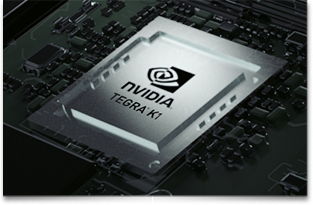865
"192-core"

The American company Nvidia at the international exhibition of consumer electronics Consumer Electronics Show in Las Vegas presented the "192-core superchip» Nvidia Tegra K1 architecture ARM Cortex A15 for smartphones and tablets.
In fact, the new processor called the 192-core is not entirely true, since we are talking about graphics cores, instead of the main processor cores, which Tegra K1 five (four cores plus extra core to save power).
What makes the Tegra K1 is really unique is the architecture of Nvidia Kepler, which had previously only used the Nvidia processors for PCs. Thus, Tegra K1 is the first mobile processor, which involved technology, originally designed for desktop gaming systems such as DirectX 11, OpenGL 4.4 and tessellation (a method of splitting polygons into smaller pieces). As a result, Tegra K1 allows you to run, for example, the game engine Unreal Engine 4, which is the basis for hundreds of games.

"Moreover, Tegra K1 - the first mobile processor, which has the same functionality as the game consoles Xbox One and PlayStation 4, and offering a higher level of performance compared to the Xbox 360 and PlayStation 3 in the palm of your hand", - stressed in Nvidia . "With this we can take the game created for the PC or console, and run it on your mobile gadget," - said Tim Sweeney (Tim Sweeney), founder of Epic Games, maker of the engine Unreal Engine.

Tegra K1 supports screens with a resolution of Ultra HD (3840 x 2160 pixels), the maximum supported resolution is 4096 x 2160 pixels. The maximum amount of memory supported - 8 GB (DDR3L, LPDDR3). The maximum clock frequency is 2, 3 GHz. The chip will be made based on 28-nm process technology
. Tegra K1 is also the first processor for the mobile gadgets that supports parallel computing architecture, CUDA.

The new processor will be released in two versions, with support for 32-bit and 64-bit data. The Nvidia expects that the first devices equipped with Tegra K1 to support 32-bit data will be available in the first half of 2014, while a 64-bit data - in the second half of the year.
--img5--
Source: www.cnews.ru























